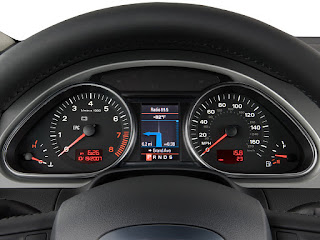- Connected to portable consumer devices for brought-in media and handsfree communications
- Connected to the cloud for obvious reasons
- Connected within the car for sharing information and media between front and rear seats, between the center stack and the cluster, and for other similar functions
- Connected around the car for providing feedback to the driver about the environment surrounding the car, be it pedestrians, other cars, or vehicle to infrastructure communications
Connected to consumer devices, connected to the cloud
Why lump these two together? There is not exactly a clear line between the two since consumer devices are often just extensions of the cloud. If my car connects to a smartphone which, in turn, draws information from the cloud, is there much point in creating a distinction between consumer device and cloud connections? Although it made sense to differentiate between cloud and consumer device connections when phones provided only handsfree calling and simple music playback, today the situation is quite different.
Device integration into the car has been a beehive of activity over the last few years. Smartphones, superphones, and tablets are providing entertainment, social networking, news, and access to a myriad of other content and applications to consumers anywhere, anytime. Automakers want to take advantage of many of these capabilities in a responsible, non-distracting way.
The primary issue here is how to marry the fast-paced consumer electronics world to the lifecycle of the car. At present, there are solutions at the opposite end of the spectrum: standardized Bluetooth interfaces that allow the car to control the smartphone; and screen replication technologies (iPod Out, VNC/Terminal Mode/Mirror Link) where the smartphone takes control and uses the car as a dumb display.
Neither of these scenarios takes full advantage of the combined processing power and resources of the car and the brought-in device. This, to me, is the next phase of car and cloud connectivity. How can the power of the cloud, brought-in devices, and the in-car systems be combined into a cooperative, distributed system that provides a better driver and passenger experience? (If the notion of a distributed system seems a bit of a stretch, consider the comments made by Audi Chairman Rupert Stadler at CES 2011.)
When looking for technologies that can bring the cloud, devices, and car together, you do not need to look any further than the web itself. The software technologies (HTML5, Javascript, AJAX, peer-to-peer protocols, tooling, etc.) that drive the web provide a common ground for building the future in car experience. These technologies are open, low cost, widely known and widely accessible. What are we waiting for?
Connected within the car
The integrated cockpit has emerged as a prevalent automotive design concept. It is now commonplace in higher-end vehicles to see seamless integration between center stack functions and the instrument cluster and driver information displays. For example, turn-by-turn directions, radio tuning, and song now playing are all available to the driver on the cluster, reducing the need to constantly glance over to the main display. One such example is the Audi cluster:
Connected around the car
Three years ago, systems in this category were already emerging, so there really wasn’t much of a crystal ball required here. Adaptive cruise control has become one of the most common features that illustrate how a car can connect to its surroundings. Adaptive cruise control detects the car’s surroundings (cars in front of you) and adjusts your speed accordingly. Other examples include pedestrian detection (offered in Volvo S60 and other models)automatic parking, lane departure warning, and blind spot detection/warning systems. These Advanced Driver Assist Systems (ADAS) will become more common as cost reductions take place and the technology is provided in lower-end vehicles.
In contrast, vehicle-to-infrastructure communication that requires industry-wide collaboration is proceeding at a pace that you’d expect from an internationally standardized solution.


No comments:
Post a Comment